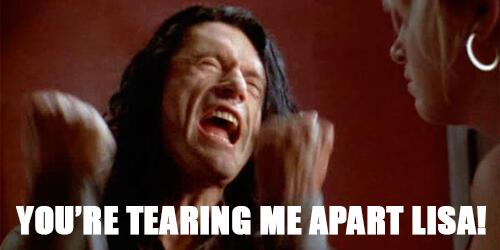The time has come in the history of cinema when it is no longer useful to simply refer to a movie as a “bad” movie. I’m sorry, Robot Monster (below) cannot continue to suffice as a catch-all example. So, like Ro-man, we must recalculate: what does “bad movie” mean in the third century of moving pictures?
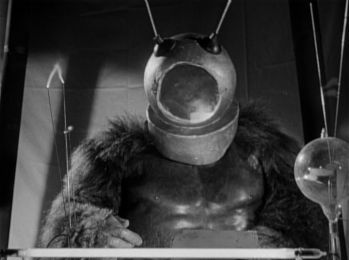
Consider Starcrash, the Italian Star Wars cash in. It is a far more lavish production than Robot Monster (which, admittedly, is not saying much) but seems almost calculated to undermine the superb casting of seventies sci-fi and fantasy siren Caroline Munro as Stella Star in every way.

It does, in fact, sport one of the most bizarrely motley casts ever assembled. There are actors from The Sound of Music (Christopher Plummer), Baywatch (David Hasselhoff), the movies of Coppola, Scorsese, and Friedkin (Joe Spinell), Caroline Munro’s house (her then-husband as a wild west cowboy robot, natch!) and the sham evangelism circuit (former sham evangelist Marjoe Gortner).
Caroline Munro’s voice is actually recast by actress Candy Clark (American Graffiti). Perhaps Clark, who was turned down for the role of Princess Leia in the original Star Wars the year before, relished at least pretending she was the prettier space rebel.
Apparently, her dulcet tones rang a bell with Marjoe Gortner, because he and Clark were married the year (1978) of Starcrash‘s release. The marriage lasted only eight months. Maybe the dubbing confused him, and he was under the impression that he was going to marry Caroline Munro.
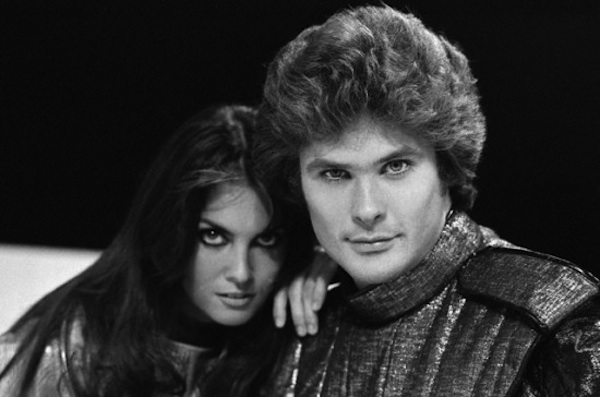
This eclectic troupe from the high, low, and middle drawers of pop culture and director Luigi Cozzi’s obvious love of the genre can’t keep Starcrash from being a mediocre if wacky concoction. But the fact that the director is having a good time saves it from being a bad movie in the same way, say, that an Uwe Boll movie is.
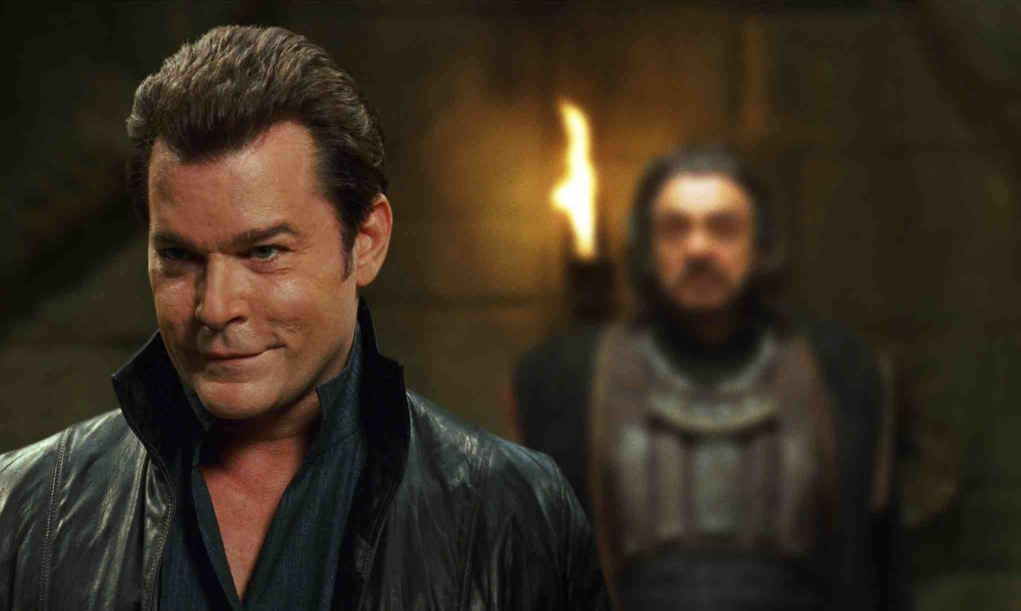
In Boll’s In the Name of the King, there is no evident sense of fun from the creators up on the screen. All the Tolkien-inspired fantasy being projected up there is by calculated association only. Name actors are just going through the motions for the check, and there’s not enough goofy lines and embarrassingly bad delivery to make it as kitschy fun as it could be.
(Although, admittedly, there is at least one pearl in the dialogue: “Do you just appear in my room from nowhere?” “Princess” Leelee Sobriski asks “Wizard” Ray Liotta. “No,” he responds, “I appear from somewhere.”)

In considering the varieties of bad movie experiences, we are, of course, obliged to acknowledge Ed Wood, Jr. Neither Starcrash nor In the Name of the King are examples of bad movies in the vein of Ed Wood. He did not create bad movies, but he seems to have established the gold standard. There’s not only plenty of enthusiasm and love but conviction in Ed Wood’s most enjoyably awful films like Plan Nine from Outer Space and Night of the Ghouls.
Those low budget movies practically sparkle with a quirky winsomeness that actually makes them of a higher caliber of entertainment than a bland, uninspired major studio production like Staying Alive, an early John Travolta star turn. Or stomach turn.
Yes, between the sequel to the iconic cultural phenomenon that was Saturday Night Fever and the proclaimed “worst movie ever made,” Plan Nine from Outer Space stands as the superior film!

In fact, in the decades since his last movie, Ed Wood stands vindicated as a popular culture visionary. Watch Plan Nine From Outer Space and Night of the Ghouls with postmodern eyes, and you’ll be surprised to see that Wood was doing the X-Files around thirty years before the X-Files! The same themes! The same essential concept!
He just does it so ridiculously, so absurdly, that you can’t take anything seriously. Perhaps “absurdist” describes Wood’s peculiar movies more precisely than the catch-all term “bad” ever could.
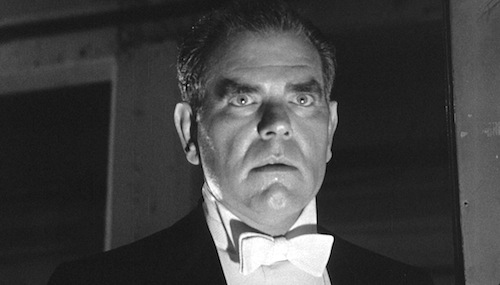

Please to see above Birdemic’s “master of romantic suspense” (as he has legally trademarked himself. Don’t let those Bobby Hill looks fool you: this man is the master of romance. It’s legally binding). James Nguyen is a guy who loves Golden Age Hollywood cinema just like Martin Scorsese. At least the films of Alfred Hitchcock just like Martin Scorsese. And there the resemblance stops.
Now, his first movie, Julie and Jack, actually had a decent, imaginative story. In the right hands, it could have been an episode of the mid-1980s revival of The Twilight Zone. His second, Replica, was at least conceptually clever: a sci-fi homage to Hitchcock’s Vertigo involving cloning. The delivery of those concepts ranged from mediocre to laughable, but the movies were fun enough.
His third, the one that put him on the map, Birdemic, is, quite frankly, wretched. Its infamy rests on audience incredulity that something so terrible on every level could have actually gotten released.
One problem present in all his films is particularly exacerbated in the Birdemic chicken fried franchise: Nguyen is tone deaf as to what a performance is. In fact, based on the majority of his casting choices, he appears to have difficulty just recognizing what an actor is.
To be fair to his ensemble, Lord Olivier would have thrown up his hands given lines like “I thought when I fell in love with someone, she’d be alive,” or “I was stung by a jelly fish! A giant jumbo jelly fish!”
Nguyen’s movies are amateurish in both the best and worst sense, but, again, not “bad” movies in the exact same way as any of the previously cited directors’ works.

Next there is Neil Breen. Some directors like a Stanley Kubrick, David Lynch, or Guy Maddin take auteur theory to new heights. Neil Breen takes it sideways and punches a hole into the fourth dimension in the process.
The resulting cinematic achievement is that Breen’s movies appear to take place in an alternate universe where he has imprinted his personality on everyone else who inhabits it. He has realized through cinema what the alien menace in Philip K. Dick’s The Three Stigmata of Palmer Eldritch aspired to achieve through chewing gum!
Honestly, I can’t recommend the original Breen trilogy (Double Down, I Am Here….Now, Fateful Findings) enough! There’s nothing else quite like them in all world cinema.
Perhaps Neil Breen as auteur is best summed up by paraphrasing Leo Tolstoy by way of a Zen koan: “No other bad actor is like Neil Breen; all bad actors in a Neil Breen movie are bad in Neil Breen’s own way.” Under his guidance, the actors become like pod people trying to speak and act like they think a real human being would, all the time confident no one is noticing the difference.
Breen further utilizes a combination of both high and low tech to enhance the over all artificiality in his movies. In Passing Through, an actor grips and turns a steering wheel with conviction while the stationary scenery through the passenger’s window makes it painfully obvious the vehicle is not moving.
Then, in the same film, CGI is employed to render a blow torch flame unconvincingly! Why not save the expense, and, you know, just use a real blow torch flame?
Apparently, the box doesn’t exist that Neil Breen won’t think outside of to blatantly undermine the verisimilitude of his own movie! Discovering the cinema of Breen is like suddenly discovering Douglas Sirk is alive and still making movies… after having had a lobotomy.
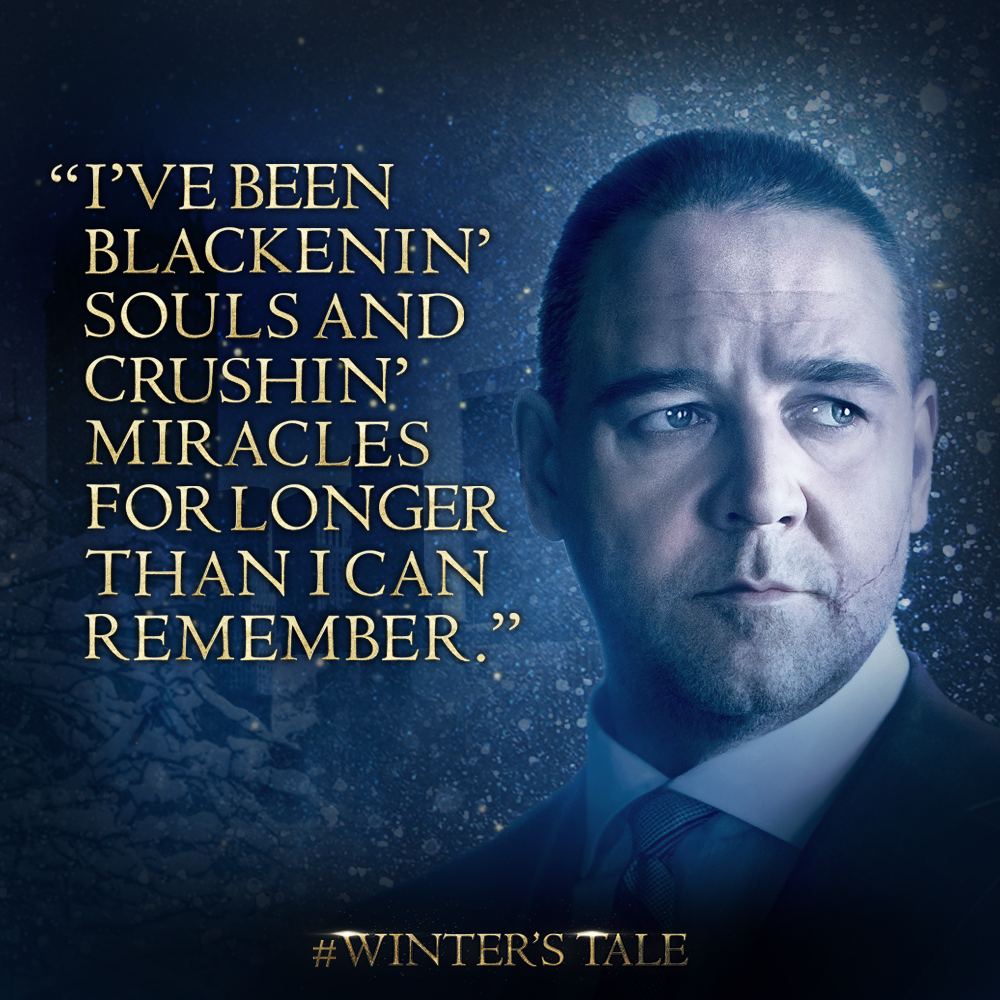
In contrast to the low budget, independent filmmakers above, the major studios are positioned to put out a peculiar type of bad movie of their own on occasion. These films are considered bad by a large part of the audience because they fail to deliver on major properties, whether it’s because of budgetary limitations, unmet fan expectations, or a loss of the original vision. Examples would be Winter’s Tale, Star Wars, Episode One: The Phantom Menace, Water for Elephants, and every Matrix sequel (yes, a worldwide success at the box office can still be a bad movie).
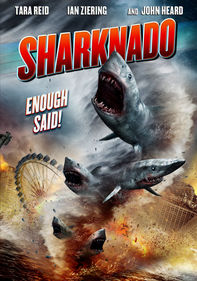
Then there are bad movies whose whole goal is to be bad. On purpose. Think the Sharknado franchise, or the SyFy channel movie of your choice. The problem here is that you can’t make a great bad movie by trying to make a bad movie. These posers immediately give themselves away just in the advertising. It seems, as with all the other arts, the ability to make even good camp is dying off in western culture.
No, you have to believe you’re doing a work of profound significance to make crème de le grand film mal. You aim high and hit low and never realize where you landed. That’s the secret the gifted possess. Only the truly artistically handicapable can make a great bad movie.
Hence, the popularity of The Room. Tommy Wiseau really believes he’s serving up a slice of timeless human drama. Like Ed Wood, he truly wants to achieve something, in all earnestness, and displays no contempt for his audience.
Something like Sharknado, on the other hand, aims low coming out of the gate. Therefore, it is my estimation that such unambitious flicks are second to the bottom when it comes to bad films.
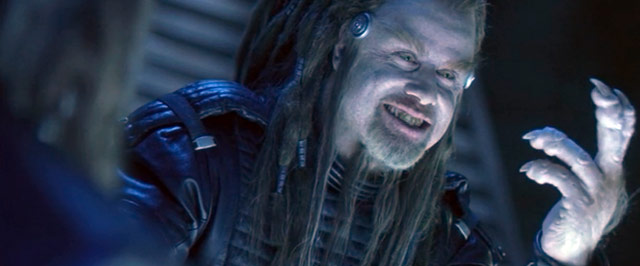
So, what, then, is the bottom? The very bottom of the cinematic abyss? Those movies that are bad because they just aren’t good. They have scarcely anything to offer to reward your spending upwards of two hours of your time that you can never get back watching them once. Forget an “event” movie; these are hardly an “experience,” which a good bad movie always is to some extent.
Examples of the worst are the aforementioned Staying Alive, Battlefield Earth (Travolta in yet another star turn, see image above), Catwoman, and the more recent and wretched Noah with Russell Crow. Even an Oscar-winning associate of Ron Howard and Will Smith, who wrote the screenplay for a good movie in A Beautiful Mind, can make a bad one of the worst variety.
Such is the unsavory case of Akiva Goldsman who transformed Mark Helprin’s book of wonders Winter’s Tale into something so comparatively underwhelming. Goldsman’s movie was the soy bean burger substitute for what should have been a porterhouse steak.
Among Goldsman offenses, he exchanged Helprin’s passages of jewel studded prose for his own attempts to sound like Helprin in the movie’s opening narration. I mean, why actually use those lyrical lines you paid for when you can give the world your paraphrase of a superior writer’s voice? He also pointlessly added the character of Lucifer to the story in the miscast person of Will Smith. What the Will Smith is the devil even doing here?
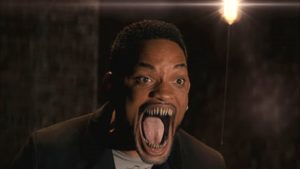
And, incredulously, Russell Crowe’s villain Pearly Soames, who, by the novel’s end is transformed into the metaphorical embodiment of materialistic nihilism… is instead transformed at the movie’s climax into a literal snow man! All I can say is, there must have been some magic in that hat you pulled this plot resolution out of, Mr. Goldsman.
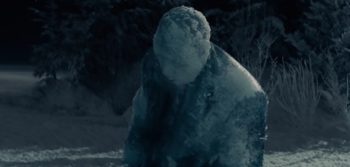
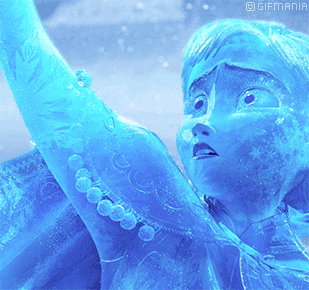
In adapting a work of literary beauty like Winter’s Tale, Goldsman should have known and done better on all counts — or known not to do it at all. He is thus by far a worse offender as a bad film maker than Tommy Wiseau, below, who, with no real experience or even a shred of real talent, still gave us The Room, a modern cult classic, words that no one will ever use to describe Goldsman’s Winter’s Tale.
Wiseau added lines to the pop culture lexicon like: “You’re tearing me apart Lisa!,” “Hi, doggy,” and “I did not hit her. I did not. Oh, hi, Mark.” He also gave a performance unlike anything else in the history of Hollywood.
It is now a contest between Mr. Wiseau and Mr. Goldsman as to whose contributions to cinema shall endure longer. The contenders are in place; let the race begin….
As for me, for now my musings over bad cinema are at an end. If you’ll excuse me, while I await my chance to see Neil Breen’s latest film, Twisted Pair, I’m going to find an overstuffed, leather upholstered chair, pour some cognac in the brandy snifter, select O Fortuna from Carmina Burana on my playlist (no doubt in the same spot you have it in your queue), and at last crack the spine of my long neglected volume one of Proust’s In Search of Lost Time, a.k.a. Swan’s Way. Take it, Marcel: Longtemps, je me suis couché de bonne heure….
